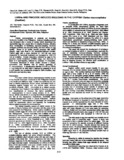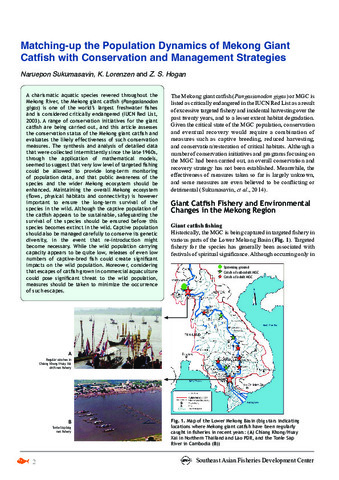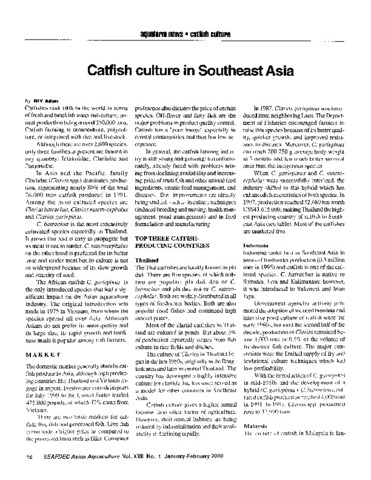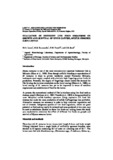LHRHa and pimozide-induced breeding in the catfish, Clarias macrocephalus (Gunther).
Share
Abstract
Clarias macrocephalus is endemaic yet dwinding freshwater foodfish in the Philippines. Induced breeding protocol was developed after a series of studies which determined the appropriate egg size, proper time of stripping females, effective dose combination of luteinizing hormone-releasing hormone analogue (LHRHa) and pimozide (PIM), and their effects on egg quality. Based on its similar osmotic pressure with catfish plasma, eggs were fixed in 1% phosphate-bufferedd formalin. Catfish eggs with a mean diameter of 1.40 - 1.60 mm were responsive to hormonal treatment and increased to 1.50 - 1.70 mm at ovulation. Oocyte maturation, indicated by eggs in the germinal vesicle breadown (GVBD) stage, was observed at least 13 h pst-injection, followed by ovulation 4 h thereafter. Techniques developed in these studies showed a simsle, convenient, and effective way to induce spawning of C. macrocephalus. A simultaneous injetion of 0.05 ųg LHRHa + 1 ųg PIM/g BW at 1800 - 1900 h, followed by stripping at 16 - 20 h post-injection has consistently resulted in 100% ovulation, high fertilization and hatching rates.
Subject
Collections
Related items
Showing items related by title, author, creator and subject.
-
Matching-up the population dynamics of mekong giant catfish with conservation and management strategies
Sukumasavin, Naruepon; Lorenzen, K.; Hogan, Z. S. (Secretariat, Southeast Asian Fisheries Development Center, 2015)A charismatic aquatic species revered throughout the Mekong River, the Mekong giant catfish (Pangasianodon gigas) is one of the world's largest freshwater fishes and is considered critically endangered (IUCN Red List, ... -
Catfish culture in Southeast Asia
Adan, R. I. Y. (Aquaculture Department, Southeast Asian Fisheries Development Center, 2000)Catfish rank fifth in the world in terms of fresh and brackishwater fish culture. In Asia and the Pacific, the Clariidae family dominates production, representing nearly 80% of the total catfish production. Among the most ... -
Evaluation of different live food organisms on growth and survival of river catfish, Mystus nemurus (C&V) larvae
Laron, M. A.; Kamarudin, M. S.; Yusoff, F. M.; Saad, C.R. (European Aquaculture Society, 2001)Mystus nemurus is one of the most commercially important freshwater fish in Malaysia. Even though artificial breeding or reproduction of M. nemurus is done in private hatcheries around Peninsular Malaysia, inadequate seed ...




